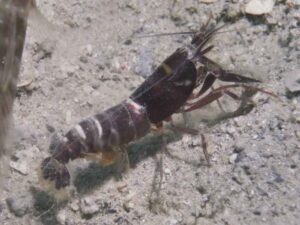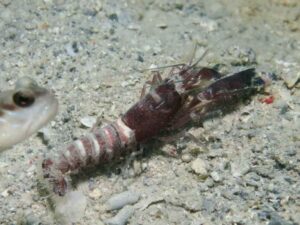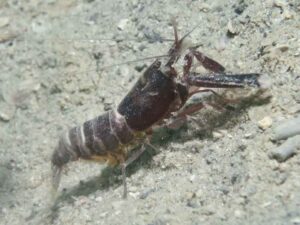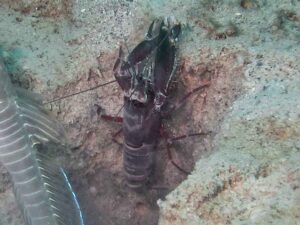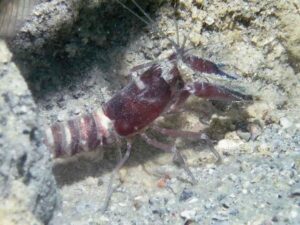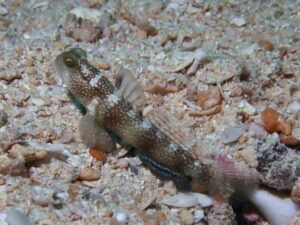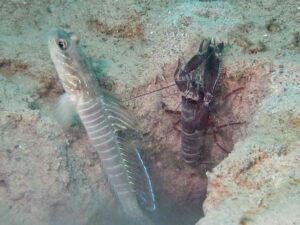Red and White Snapping Shrimp
Alpheus species 8
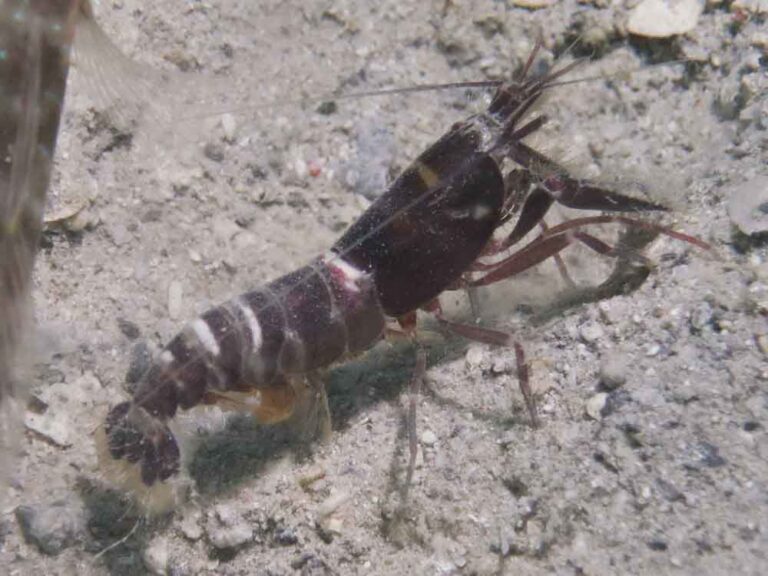
Red and White Snapping Shrimp
Alpheus species 8
undescribed
Description
Carapace: Uniformly dark maroon. One white transverse band dorsally and a faint suggestion of an epaulette on the side.
The abdomen is demarcated from the carapace by a white band. Each segment is marked by a transverse dark red band followed by a white band. The contrast between the white bands and the otherwise dark maroon shrimp is striking.
Tail transparent with maroon scutes. It often has a moderate number of setae.
The legs are maroon with pale joints
The rostrum is maroon and the antennae are grey with a maroon tinge.
The pincers are uniformly maroon, and narrow with long dactyl and pollex.
Identifying Features
Unmistakable. The dark body and white bands are unique.
Similar Shrimps
Red Sanpping Shrimp, do not have the conspicuous white bands and live in a very different habitat.
Nomenclature
Undescribed shrimp. No scientific name.
Alternative common name (applied to a photograph from Flores, Indonesia): Black Goby-shrimp, Kuiter and Debelius (2009).
We have not seen this shrimp form a pair with any of the other shrimps described in this book.
Ecology
HABITAT
Preferred substrate Thick silt with fine shell fragments, in turbid water
Depth range 5 to 20 metres
Proximity to reef Burrows are excavated on open areas of fine silt, well away from the reef in very sheltered and turbid backwaters.
NATURAL HISTORY
A robust shrimp capable of excavating and maintaining a wide burrow in the tenacious mud substrate. We have found these shrimps in sheltered water in muddy lagoons where visibility is low and worsened by the shrimp’s activities.
Distribution
Published distribution:
Flores Island, Indonesia, Debelius and Kuiter (2009).
Our records:
Solomon Islands; Kolombangara Island.
Associated Goby species
Associated Shrimpgobies (two species)
Cryptocentrus fasciatus, Y-bar Shrimpgoby.
Cryptocentrus multicinctus, Multi-Barred Shrimpgoby

